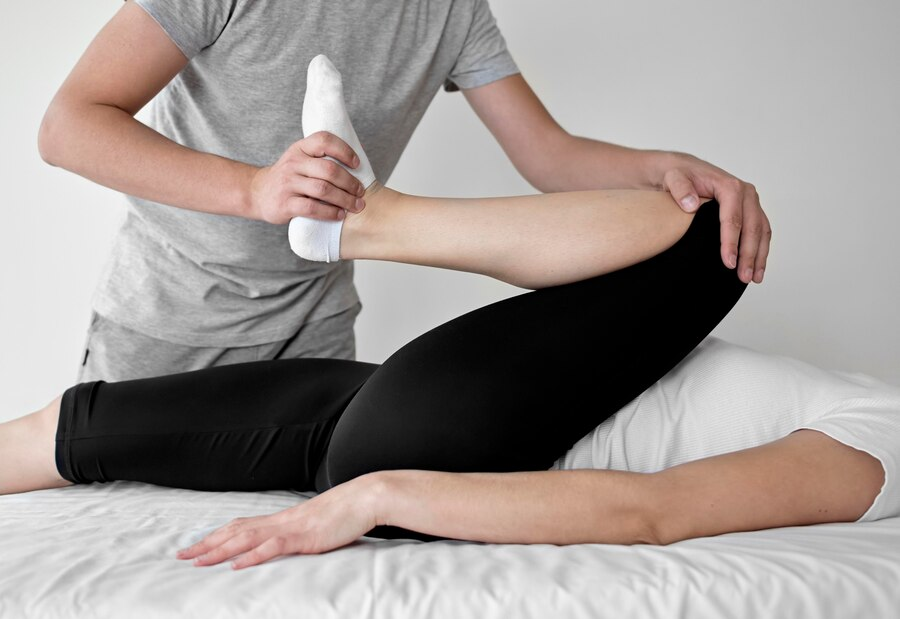Pain management is a critical aspect of maintaining a good quality of life, especially for those suffering from chronic pain conditions. While medications can be effective, non-pharmacological pain relief techniques offer alternative methods to manage and alleviate pain without the side effects associated with drugs. This article explores a variety of non-drug pain relief techniques that you can try.
1. Physical Therapy:
-
Benefits: Physical therapy involves exercises and manual techniques to improve mobility, strengthen muscles, and reduce pain. It’s particularly effective for musculoskeletal pain.
-
Approach: A physical therapist can create a personalized exercise plan tailored to your specific condition and pain management needs.
2. Acupuncture:
-
Benefits: Acupuncture, a traditional Chinese medicine practice, involves inserting thin needles into specific points on the body. It can help reduce pain by stimulating nerves and increasing blood flow.
-
Approach: Ensure you see a licensed and experienced acupuncturist for safe and effective treatment.
3. Transcutaneous Electrical Nerve Stimulation (TENS) Therapy:
-
Benefits: TENS therapy uses low-voltage electrical currents to relieve pain. It’s useful for a variety of pain conditions, including arthritis and back pain.
-
Approach: Place electrodes on the skin near the pain area and adjust the intensity to a comfortable level. Follow the manufacturer's instructions for optimal use.
4. Mindfulness Meditation:
-
Benefits: Mindfulness meditation helps reduce pain by altering the way you perceive and react to it. It promotes relaxation and reduces stress, which can exacerbate pain.
-
Approach: Practice mindfulness by focusing on your breath and being present in the moment. Guided meditation apps and classes can help you get started.
5. Yoga and Stretching:
-
Benefits: Yoga combines physical postures, breathing exercises, and meditation to enhance flexibility, strength, and pain management. It’s particularly beneficial for back pain and joint issues.
-
Approach: Join a yoga class tailored to your fitness level and pain condition. Gentle stretching exercises can also be incorporated into your daily routine.
6. Heat and Cold Therapy:
-
Benefits: Applying heat can relax muscles and improve blood flow, while cold therapy can reduce inflammation and numb the pain.
-
Approach: Use a heating pad or warm towel for heat therapy, and ice packs or frozen peas wrapped in a cloth for cold therapy. Apply for 15-20 minutes, several times a day.
7. Massage Therapy:
-
Benefits: Massage therapy helps relieve muscle tension, improve circulation, and promote relaxation. It’s effective for reducing pain from muscle strains, injuries, and chronic conditions.
-
Approach: Schedule regular sessions with a licensed massage therapist or learn self-massage techniques for daily relief.
8. Cognitive Behavioral Therapy (CBT):
-
Benefits: CBT is a type of psychological therapy that helps change negative thought patterns and behaviors associated with pain. It can improve pain coping strategies and reduce overall pain perception.
-
Approach: Work with a licensed therapist who specializes in CBT for pain management. Sessions can be conducted in person or online.
9. Aromatherapy:
-
Benefits: Aromatherapy uses essential oils to promote relaxation and reduce pain. Certain scents, like lavender and peppermint, have pain-relieving properties.
-
Approach: Use essential oils in a diffuser, add a few drops to a warm bath, or apply diluted oils to the skin with a carrier oil.
10. Biofeedback:
-
Benefits: Biofeedback teaches you to control physiological functions, such as heart rate and muscle tension, to reduce pain. It can help manage migraines, fibromyalgia, and other chronic pain conditions.
-
Approach: Biofeedback sessions are typically conducted by a trained therapist using special equipment. Home devices are also available for ongoing practice.
Conclusion:
Non-pharmacological pain relief techniques provide effective alternatives or complements to medication. By incorporating methods such as physical therapy, acupuncture, TENS therapy, mindfulness meditation, and more, you can manage pain in a holistic and sustainable way. Always consult with healthcare professionals before starting any new pain management strategy to ensure it’s appropriate for your specific condition.




